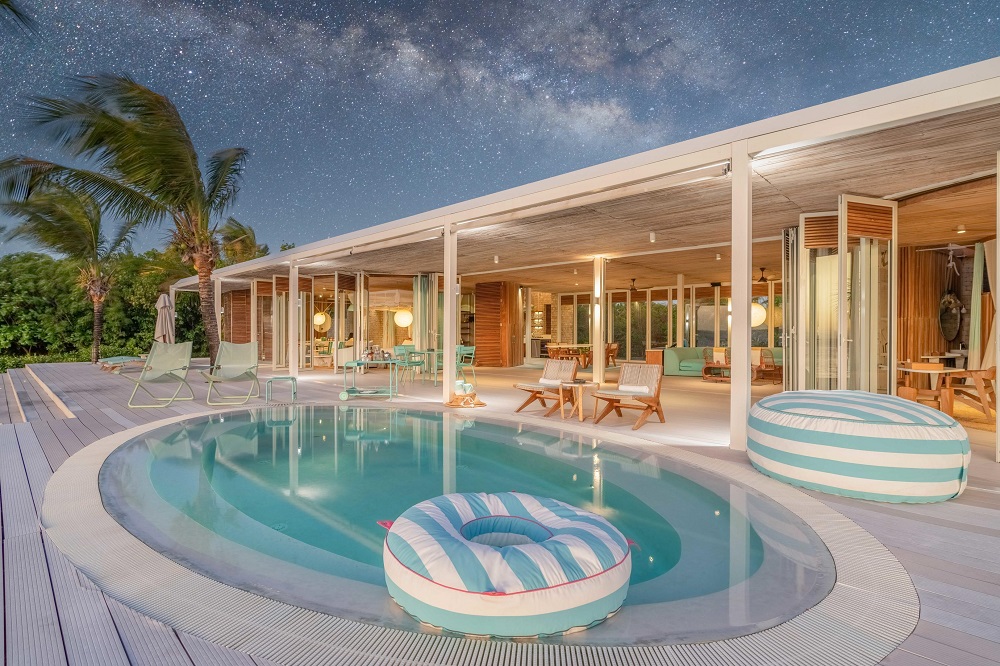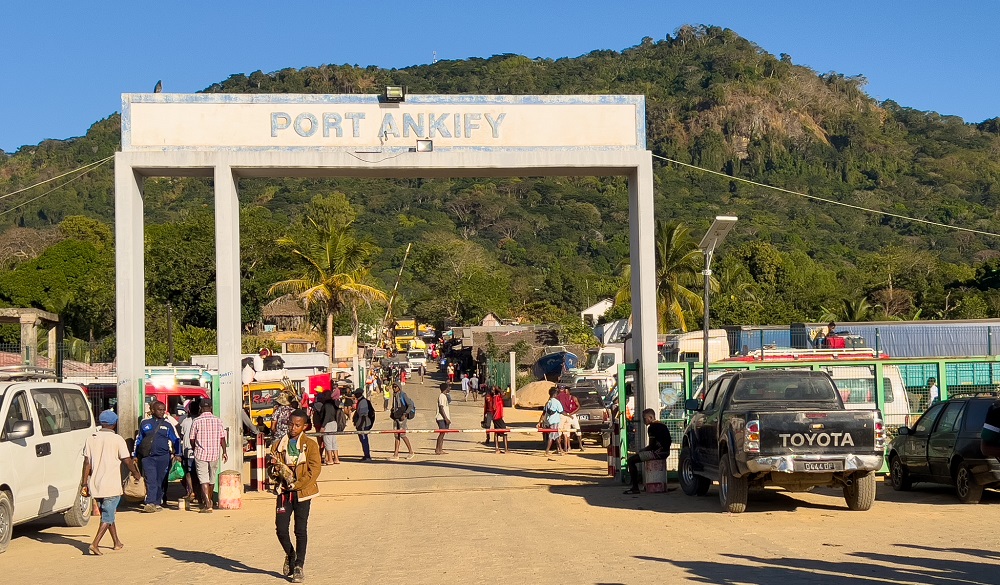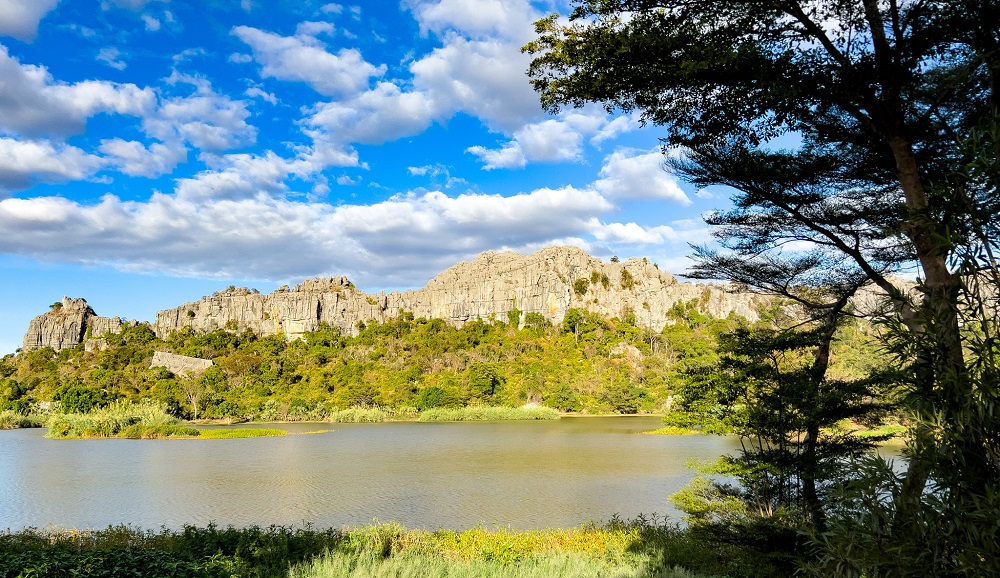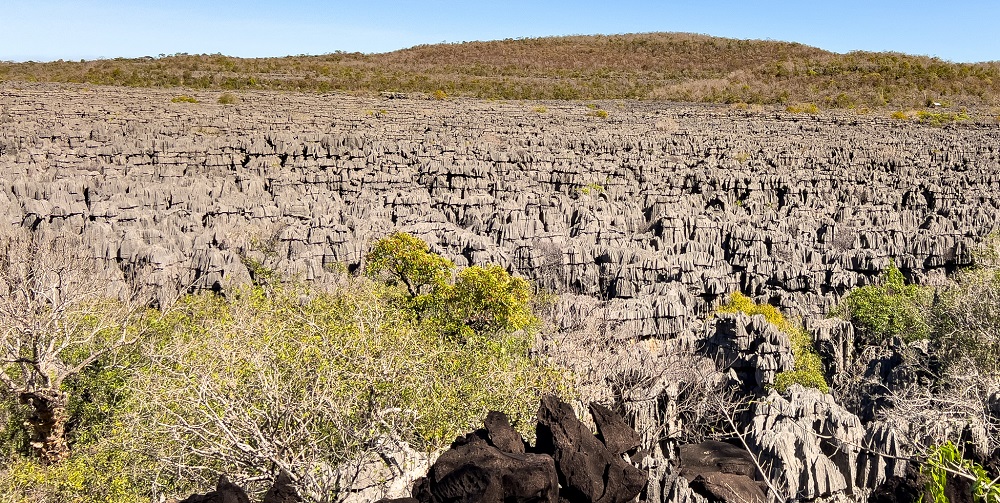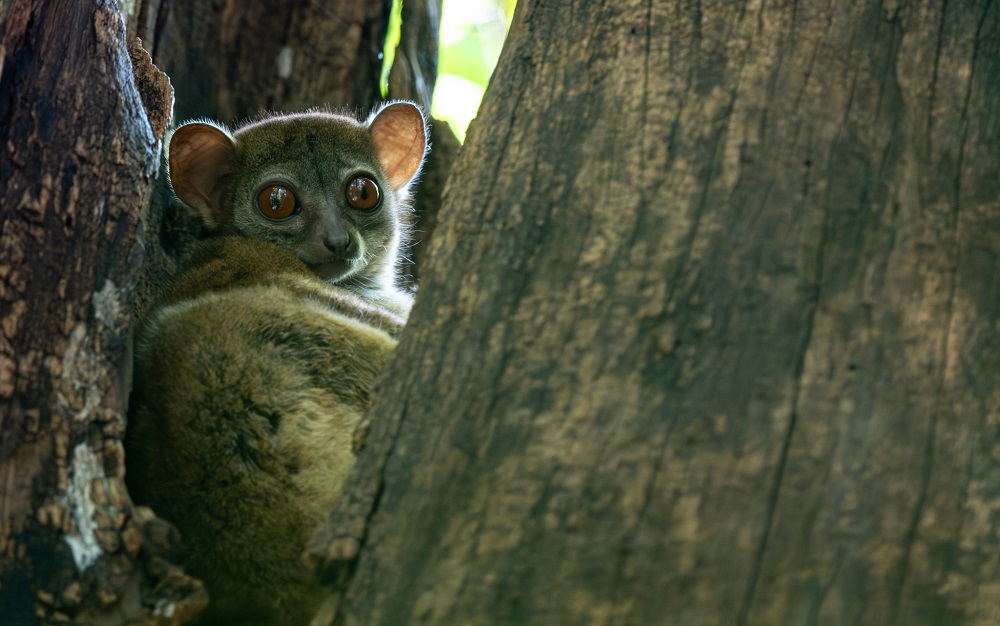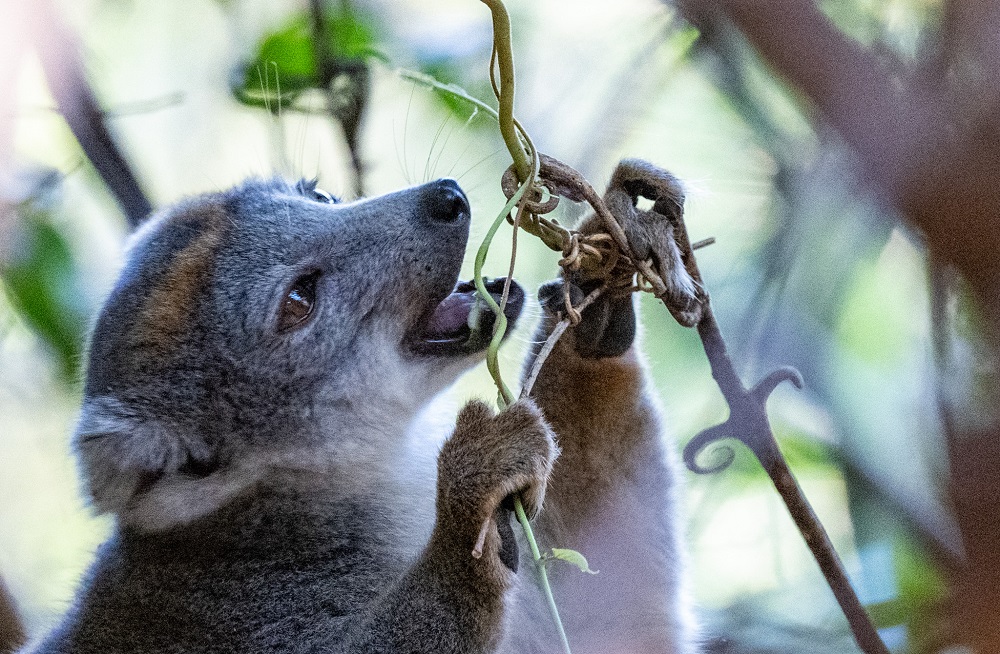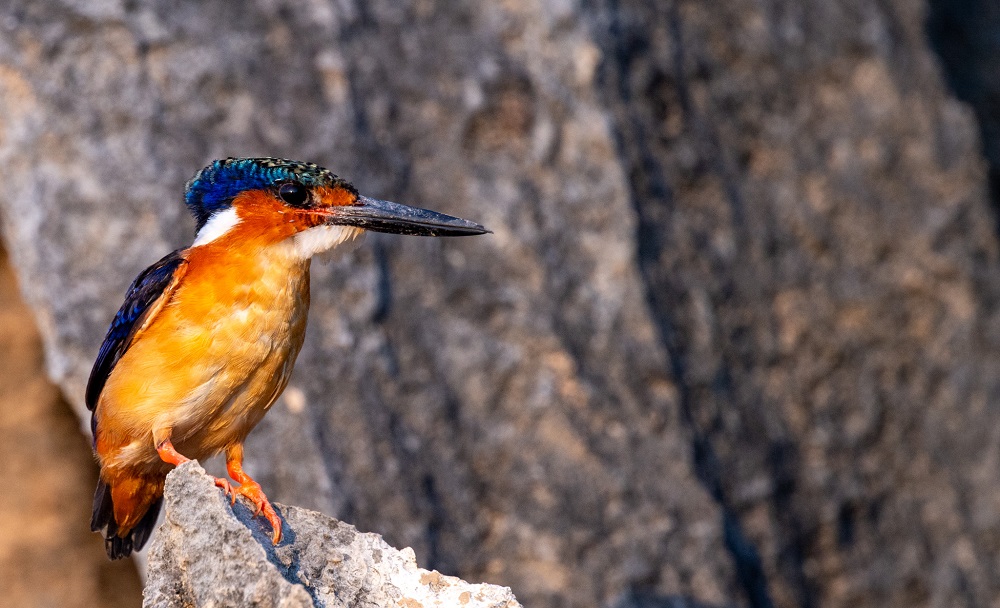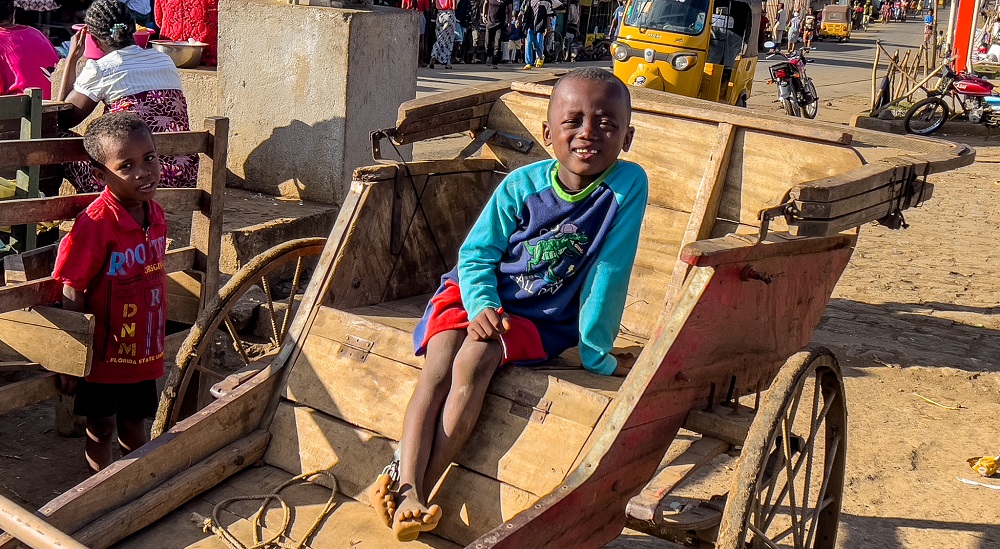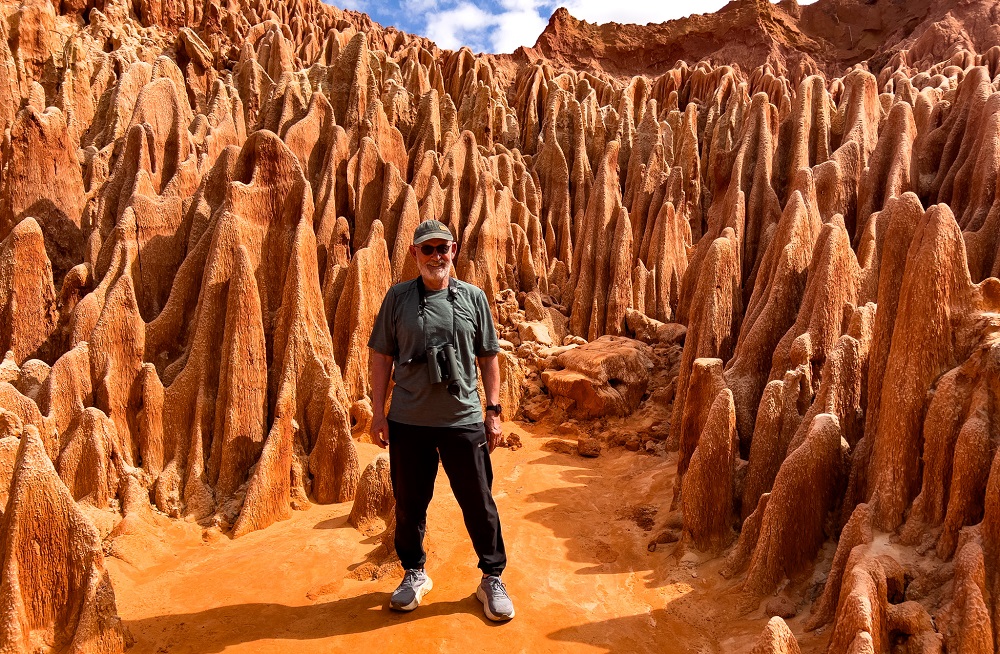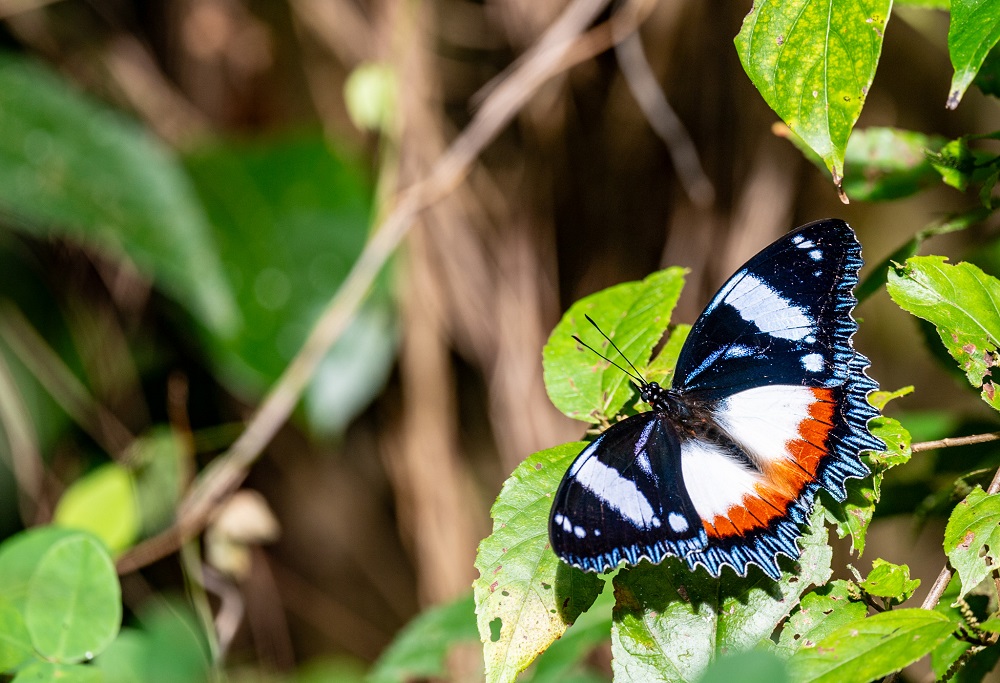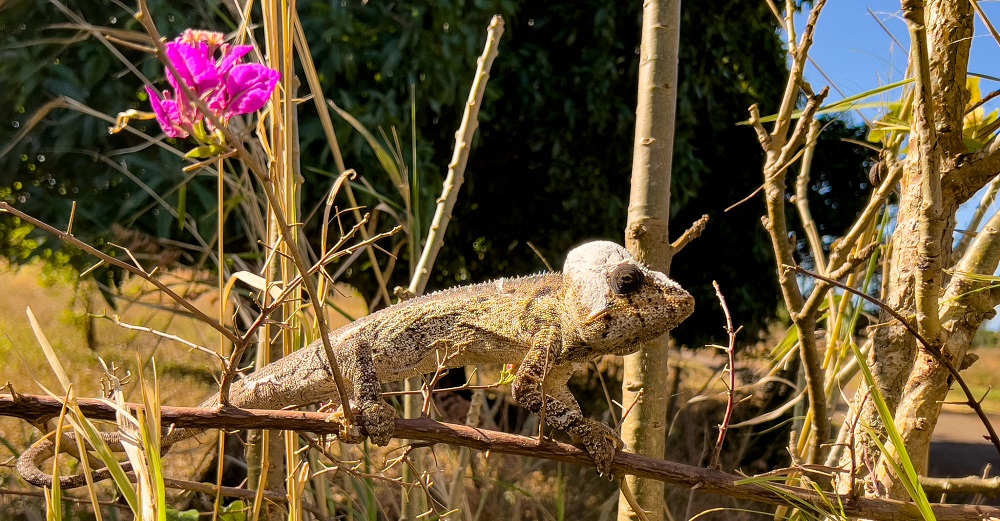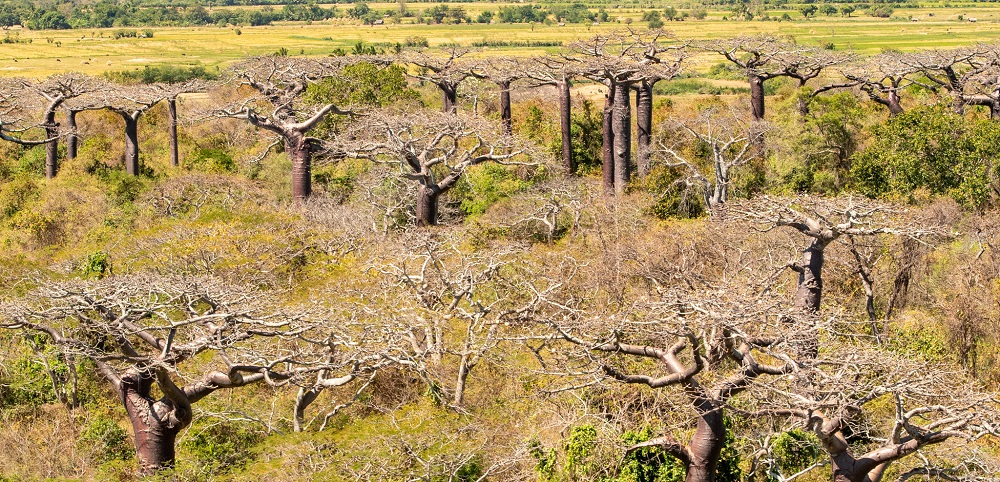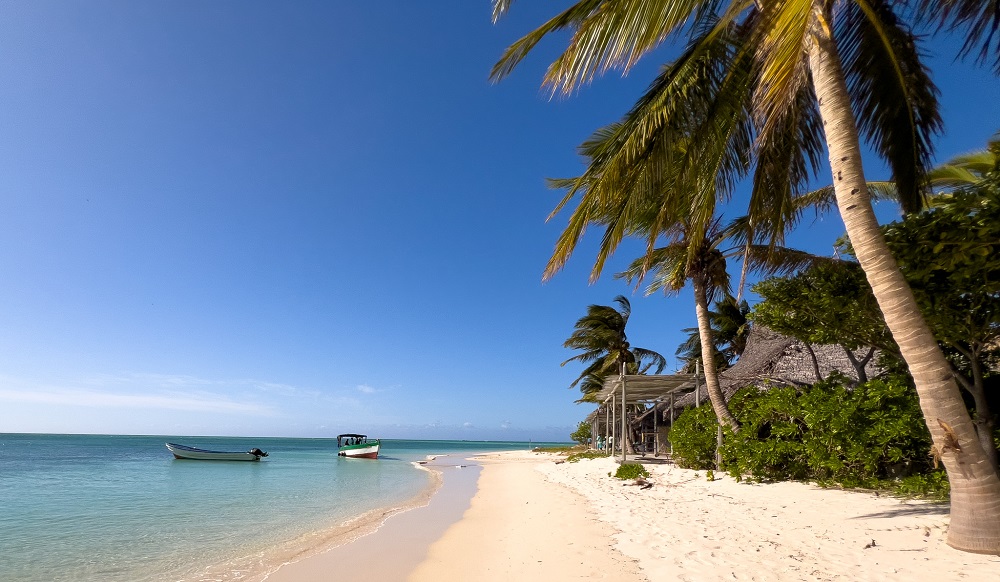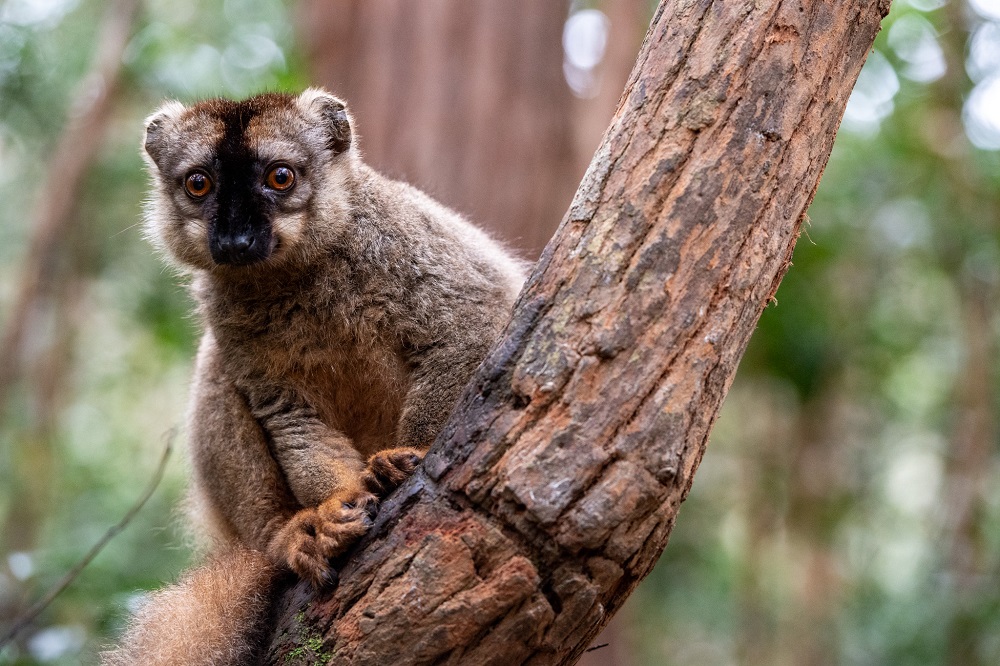Madagascar East, West & North: June-July 2024 - Part 2
Kathy and I had no idea of what to expect on what turned out to be a fascinating visit of about 10 days to northern Madagascar, visiting places such as the Nosy Be archipelago, Ankarana National Park, Montagne D’Ambre National Park, the extraordinary Miavana island resort and ending with several days at Time & Tide’s Tsara Komba on Nosy Komba island.
To us, all of these places had hitherto just been points on a map, ill-conceived mental snapshots, much like rudimentary Al images. With very little resemblance to the vivid, warm reality which we experienced once we actually made it there.
Standouts? The beach at Tsara Komba, snorkeling at Nosy Tanikely, a forest walk at Montagne D’Ambre, a helicopter flight crisscrossing the area. And the food – everywhere.

Off to the north
Following on our all too brief stay at the superb Anjajavy Le Lodge on the west coast – read more in the blog post on our website – we returned to Tana. We spent the night at the perfectly fine if unremarkable Relais de Plateau hotel. Its two best features? A pretty good restaurant and being less than 10 minutes from Ivato airport. Our ebullient driver Mami drove us back the short distance to the rather dismal domestic terminal. On this day and earlier – on the wild ride to catch the flight to Anjajavy – Mami was a real asset to have around, helping us with luggage and getting us into the right line. Our next stop would be the well known northern Madagascar beach area of Nosy Be.
A night in Nosy Be
The Nosy Be archipelago has long attracted sun seekers, scuba divers and snorkeling enthusiasts from all over, notably France and lately Italy. With weekly flights on Neos Airlines from Milan and Rome, running into visitors from Italy in northern Madagascar is no coincidence.
From Tana, the flight duration to Nosy Be is a solid nine times shorter than from Milan. Only about one hour in an ATR operated by Cemair (for Madagascar Airlines). Unlike some of our other recent flights, this one was plain sailing with minimal fuss. It definitely helped to have paid extra for business class (for additional luggage) which provided access to a small airport lounge with some good coffee and a few bizarre breakfast food options. More importantly it resulted in us being waved through, while other passengers had their carry-on luggage weighed.
It took a good 45 minutes to get from the airport at Nosy Be to our hotel/resort – Ravintsara. To put it charitably, the property is a little past its prime but it has good-sized air conditioned rooms with a comfortable bed, mosquito net, a bath (one of those weird jacuzzi-like ones with jets) and a proper shower. The property has a noticeably lush garden and an exceptionally nice pool. The food was fine, with a more than respectable curried chicken with rice being one of the three options for dinner. The beach? Utterly forgettable, starting with difficult access down some steep, rough stone steps and a notable lack of white sand. There were several young couples relaxing on loungers under a row of palm trees on the edge of the beach. To be sure, some of them seemed to be having fun, but their smiles clearly had more to do with being in each other’s company than with the view, the beach or the setting.
The following morning we were driven to the port of Nosy Be. Following a hectic boarding process (of the type where you can’t keep track of your luggage) we stepped into a private speed boat transfer to the port of Ankify, on the mainland. And speedy it was, of the ‘hold on to your hat’ variety. From there, we drove – for the better part of the morning – in a northerly direction towards Ankarana National Park, close to which we would spend the following two nights.
Ankarana National Park
Iharana Bush Camp – where we spent just one instead of the two nights we had paid for – was a disappointment on several levels. We can handle rustic, but we’re beyond ‘primitive,’ so a room without proper windows or exterior doors which could be closed, was just not appealing. There was nowhere to sit and a fine layer of white dust coming down on everything was the last straw. Turned out they were sugar cane ashes. The room did have a pretty good shower head but alas, there was an issue with slow drainage. The veranda overlooking the small lake – with a pretty mountain in the background – was a nice spot to while away some time.
Iharana Bush Camp was too close to a nearby village and too far from Ankara National Park. It takes a solid 45 minutes to get to the main road (from Iharana) along a bone-jarring track and then it’s at least another 45 minutes to get to the park. Clearly the property had been badly impacted by a cyclone earlier in the year.
There were no issues with the only activity which we had time for, an outing on a small lake, during which we saw quite a few birds. Iharana Bush Camp also has a great view across the lake, with a pretty mountain with visible tsingy formations in the background. The lounge area was furnished and decorated in an interesting and creative manner. The staff members were friendly but not always present. The food was acceptable but nothing special.
We made it to Ankarana National Park at around 9:00 am. the following morning. A solid two hours later than I would have liked to be there. The park is mostly known for its particularly appealing tsingy rock formations – the so-called ‘tsingy rara’ – and for a mysterious natural sinkhole where three rivers disappear into what is in essence a natural bathtub, draining directly into the Indian Ocean about 12 miles away.
Tsingy is the Malagasy name for the country’s dramatic limestone karst rock formations, appearing like a forest of often razor-sharp shards. In Madagascar, there are three areas of tsingy popular with visitors. The largest is the Tsingy de Bemaraha in the western dry forests of the country. The other good example of tsingy can be found at Ankarana, where we were to see it up close at the terminal point of the forest walk.
The third area – known as the Red Tsingy – is also in the far north. While it superficially resembles real tsingy due its weird elongated shapes and spiky appearance, the red tsingy is not a limestone formation. It was caused by rain erosion on laterite. The red, or ‘false,’ tsingy is a much more recent phenomenon than ‘real’ tsingy which developed over millions of years. The erosion which exposed the red laterite tsingy-like structures is a modern-day phenomenon, being the result of environmental degradation caused by slash and burn agriculture.
With our energetic guide Simon showing the way, we strolled along a well maintained, easy trail under the dense canopy of the beautiful dry deciduous Ankarana forest. Right off the bat we saw three different kinds of lemurs, namely western gray bamboo lemur, red ruffed lemur and a couple of sleepy looking sportive lemurs which mostly rest up during the day and become active at night. These nocturnal creatures are insectivorous unlike the diurnal lemurs which are mostly plant eaters.
Unfortunately we did not have time to do a walk onto the tsingy and to cross the nearby hanging bridge. Our advice would be to spend two nights closer to the park than we did and make the most of at least one guided morning visit inside the park.
We spent the night at Ankarana Lodge, a 3.5 star lodge which is exceptionally well located for visits to Ankarana National Park, being less than five minutes from the gate. Our recommendation is to be there the moment the gate opens as that is when many of the forest dwellers are active: it is nice and cool and the light on the tsingy formations will no doubt be soft and pleasing. There were a few quirky things about Ankarana Lodge including the in-room air conditioning being available only from 8 pm to 10 pm. The excellent food and friendly staff made up for it though.
Money and credit cards
More than once we forgot that credit cards are not widely accepted everywhere in Madagascar – this happened at both Iharana Bush Camp and Ankarana Lodge. Not only would they not accept our credit cards: our cash US dollars were no good either. It was Malagasy ariary or Euros and nothing else. Which caused an uncomfortable situation for us when we were literally down to our last few Malagasy ariary and had to borrow some cash from our guide Bruno. It worked out fine in the end but prospective visitors need to keep it in mind. Carry plenty of cash with you, and have some ‘emergency Euros’ in your back pocket. You never know when they may come into play.
Driving from Ankarana to Diego Suarez
The drive from Ankarana along the main south-north highway – the RN2 – was yet another microcosm of Madagascar. The vestiges of the beautiful landscapes and forests are still there but they barely shine through among the grim reality of decades of deforestation. What was once virgin forest is now small farms or large sugar cane plantations, and it is impossible to overlook the alien vegetation including the ubiquitous eucalyptus trees.
All along the way, in a seemingly never-ending pattern, we would pass one small village after another with rudimentary small homes, shacks and other structures just meters from the edge of the road. Along this road, it was difficult not to observe the squalor associated with grinding poverty. Clearly, life is hard in rural Madagascar but fortunately we did not see any obvious signs of malnutrition. In fact all the many toddlers and children we observed seemed to be well-fed and healthy. The staple food of Madagascar is rice, and it – together with beans, cassava, corn, peas, spring onions and sweet potatoes – is widely cultivated on the small farms which are found all over the countryside.
Along the north road, the entrepreneurial spirit was very much in evidence. There were vendors everywhere. Some work from good sized covered structures in side-alley bazaars, their shops brimming with wares ranging from charcoal braziers to fresh produce, rice, beans and other foodstuffs, all the way to colorful garments of every shape and size. Others, mostly solo operators, had just a table and a couple of baskets. With preciously few items for sale. Often just a handful of tomatoes, some onions or bananas or maybe some menakely, the local version of donuts. I tried my best to convince our guide Bruno to let me try the road-side treats but without success. Probably just as well.
Once or twice along the way, we stopped for photos and despite the language barrier it was easy to quickly establish trust and engender just enough confidence on the part of the locals for a snapshot. In fact, one of the most frustrating parts of the road trip portion of our Madagascar journey was driving past dozens of photo opportunities. So if you are keen on mixing it up with the locals, by all means plan on exploring some of the byways and hidden highlights associated with the human experience. Just be sure to adjust your schedule to provide for some time and where possible, some pre planned stops.
Almost everywhere, and more so in the rural areas, there were startlingly large numbers of babies, toddlers and young children to be seen, indicative of one of Madagascar’s other challenges. Largely unchecked population growth. The statistics tell the story.
Madagascar’s rapid population growth has the country on a path to reach nearly 51 million total population within the next 25 years. An increase of a whopping 70% over the current 30 million. This is the result of only slowly decreasing fertility rates combined with increases in life expectancy. Further contributing to rapid natural population growth is Madagascar’s exceptionally young demographic profile, with 40% of the total population being under 15 years old. In time, urbanization and education will further decrease the rate of population growth. Until then, many more millions of Malagasy will join the ranks of people living under the poverty line.
Red Tsingy
On our way from Ankarana to Antsiranana (Diego Suarez) the following day, we took a detour to the so-called red or ‘false’ tsingy formations. My initial reaction to seeing the famous red tsingy was less than enthusiastic. It appeared to have been damaged by a recent cyclone with some of the red cones having fallen over and one or two areas being partially obliterated by shifting mud.
However, as our guide Bruno and I walked further up the ravine – to which the red tsingy is confined – the views kept getting better. By far the best spot was close to the viewing platform under a tree, quite high up in the ravine. Pretty much surrounding the viewing platform, these strange – practically orange – protrusions lend a surreal atmosphere to the place, turning it into what could easily be mistaken for some long lost corner of Mars.
The red tsingy are laterite rock formations, uncovered by erosion in a canyon, a process which was accelerated by runoff caused by deforestation. All starting with the ‘slash and burn’ activity when local farmers cut down and burned portions of the forest to create grazing areas for their zebu cattle.
After the pretty strenuous hike – in bright sunshine – we stopped for lunch at a local family enterprise where local dishes such as wild boar with rice and a starter of crab and avocado salad were served. It was excellent. Just like elsewhere in Madagascar there was no Zero or Diet Coke but I gladly settled for YouZou. A bit like Sprite but not as sweet; you’ll just have to try it for yourself sometime.
Montagne D’Ambre National Park
Our next stop was the port city of Antsiranana for two things: to get some much needed Madagascar ariary from an ATM and to buy some good quality Madagascar vanilla from a local source. Then it was 45 minutes or so on a truly awful road to our next stop: Nature Lodge, a simple, delightful thatched property with 12 chalets, all with nice if somewhat distant views over the ocean. We liked everything about this property: the setting, good food, great all round hospitality, comfortable, well equipped rooms and close to Montagne D’Ambre National Park. The park, the oldest one of its kind in Madagascar, is known for its gorgeous forest with massive trees, small lakes and several ‘sacred’ waterfalls. The park is home to several interesting bird species as well as a couple of lemur species. For serious birdwatchers we’d recommend two morning outings into the park as forest birding is always challenging and often impacted by wind or other factors. Just be sure to start as early as possible. Our local forest guide Regas was knowledgeable and affable.
A helicopter flight to Miavana
At the security checkpoint at Diego Suarez’ tiny airport we – and every piece of our luggage – were intensively scrutinized, to the extent of being patted down and checked with a handheld metal detector. The airport bureaucrats once again demonstrated a severe lack of common sense. Once everyone there was convinced that we were not a pair of grey-haired, wild-eyed fanatics intent on creating havoc involving mostly ourselves, we were allowed to board our aircraft. Much to our delight, it was Miavana’s recently acquired Airbus 135, a 7-seat helicopter which got us across to the island resort in the utmost of style and comfort. About as quiet and stable an experience flying in a helicopter as one could imagine. The Airbus helicopter can take up to 6 passengers with one pilot or 5 passengers with 2 pilots. It is a state-of-the-art machine in every way. Along the way en route to Miavana, beyond ‘just’ the gorgeous scenery and various shades of blue ocean, there were several other points of interest to observe and objects to photograph from the air. Most notably, a particularly nice stand of the locally endemic Adansonia perrieri, a highly threatened species of baobab. Kathy also spotted a large sea turtle swimming in the clear ocean water – much to her delight.
Behind the controls of the helicopter was Hein Brittz, Time & Tide’s chief pilot. Hein has been with Miavana from the very beginning, since 2014, and has acquired extensive experience and expertise flying and traveling all over the island and beyond. When not flying, Hein is a keen fly-fisher and he knows where and when several sought-after species like giant trevally can be caught – and released. He knows the waters around the island like the back of his hand. Clearly a natural at any island adventure, Hein makes the perfect guide to this extraordinary place he calls home. We found Hein to be super friendly and enthusiastic and would have liked to have spent more time with him.
On both our chopper flights – from Diego Suarez to Miavana and later from there clear across Northern Madagascar to Nosy Be, I was fortunate to get to occupy the co-pilot seat in front. In both the Airbus and Miavana’s other chopper – the really nice turbine Robinson 66 – this seat has practically unobscured views to the front and below. Using a Nikon 70-200 zoom lens at 1,000th of a second shutter release speed and a focal length of f-8 I managed a few decent exposures despite some pretty hazy conditions.
A valuable piece of advice from Hein was for confirmed guests to pre-book a couple of helicopter outings – catering to their specific interests – even before arriving at Miavana. By the time guests realize – on the flight from Diego Suarez to Miavana – just how exhilarating and rewarding flight-seeing by helicopter is, it may already be too late to book an outing of their choice, particularly on a stay of just a few days.
Miavana Resort
Miavana resort is gorgeous and beyond beautiful and impressive with 14 massive villas ranging from one to three bedrooms with as much space as anyone could possibly desire, with views to boot.
Clearly, Miavana is the ultimate in luxury and self-indulgence, the kind of place where celebrities come to escape the paparazzi. We certainly felt special, being welcomed by Damian Goncalves-Jardine, assistant general manager and whisked off by electric cart for a poolside lunch.
Our tapas lunch was straight out of a romance novel with swaying palm trees, a cool breeze, and mesmerizing views over the ocean, about as far away as a soft toss of a small coconut.
Miavana does not do anything half-heartedly as we quickly realized, having ordered two tapas items each, which seemed like a reasonable thing to do. The portions were huge but the freshly prepared shellfish and other items were so delicious, we managed.
While Kathy enjoyed a massage I checked out the villa, a beautifully designed edifice with literally everything you could want ranging from a king size plus bed, his and her sinks, a huge bathtub, a separate toilet, indoor and outdoor shower, a kitchenette with fridge, coffee maker, a selection of premier wines and beverages and an abundant buffet of snacks. If your favorite wasn’t there, you could request it.
Each villa has its own electric buggy and bikes to get around the island and to make your way to and from the main building.
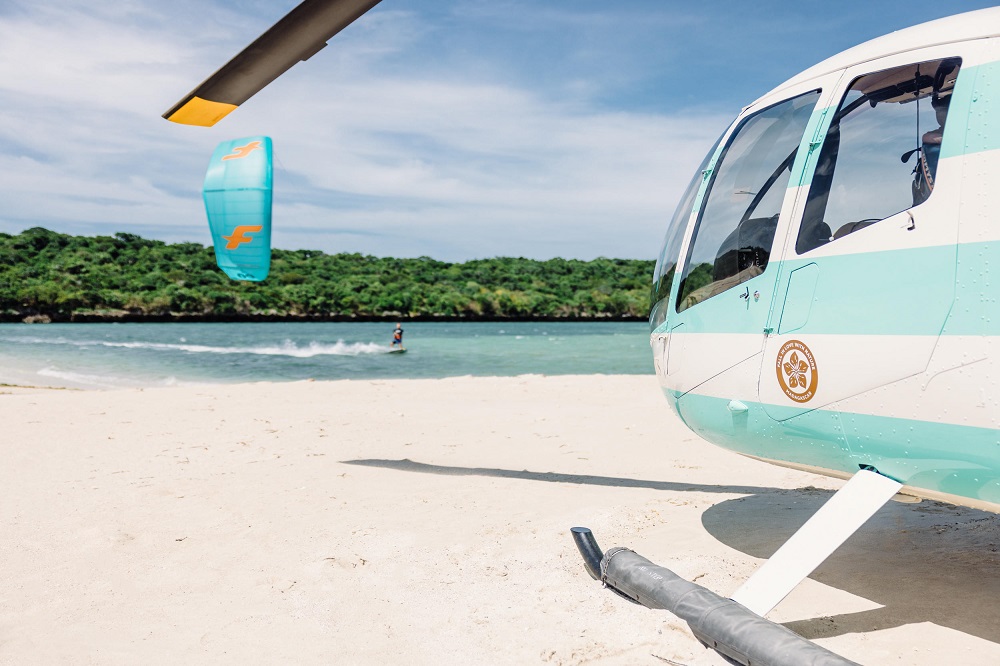
Activities at Miavana
Our short inspection visit to Miavana provided us with a good overall impression of the setting and the beauty of the area. What we didn’t have time for were the many activities which include scuba diving, snorkeling, fishing, boating, paddle boarding, kayaking, kiteboarding, island tours, lemur trekking, nature walks, turtle monitoring, birdwatching, tree planting, spending time at the gym, the ‘cabinet de curiosities’ and at the well-stocked boutique. There’s more: spa treatments which cover a range of luxurious massages, facials, body treatments and finishing touches, as well as Ayurvedic treatments and yoga classes.
Several extraordinary national parks are just a short helicopter flight away from Miavana on the Madagascar mainland. Accompanied by one of their knowledgeable guides, you can explore the region’s rare wildlife, remarkable landscapes and fascinating natural history. Destinations include Daraina (Tattersall’s Camp), Anjahakely (Black Lemur Camp), Ankarana National Park, Tsingy Rouge, Baobab forests and secluded sundowner spots. Or tailor-make your own scenic flight adventure.
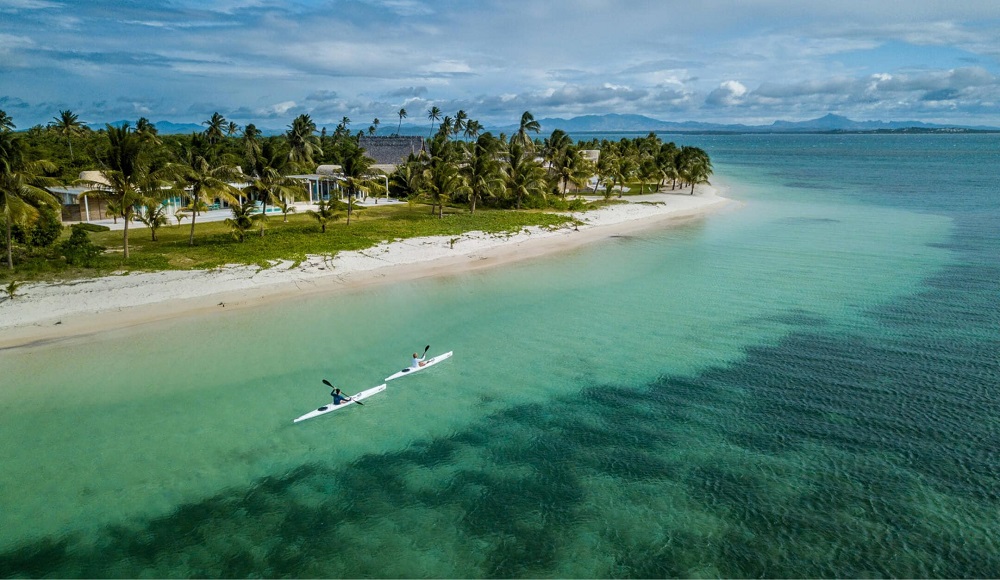
Miavana for children
Miavana is the ultimate playground for children, offering activities tailored to each child’s age and interests. Little island explorers can adventure across land and sea, learning about the environment as well as from different members of the team. Enriching, inspiring, and importantly – fun. Some popular kids activities at Miavana include PADI Bubblemaker & Discover Scuba Diving, snorkeling, fishing, watersports, swimming, treasure hunts, chameleon challenge, and scavenger hunts. Beyond those there are opportunities for Malagasy face painting and other cultural experiences, as well as other active pursuits like bike riding, buggy license and guided quad biking. Children can embark on turtle walks, lemur treks, and participate in tree planting. They can play beach volleyball, cricket, soccer, and table tennis. Miavana has lots of outlets for their creativity such as sand castle making, coconut painting, Madagascan animal mask making, beading and other crafts. For the budding chefs there’s pizza making, cookie baking and cupcake decoration.
Our last few days in Madagascar were spent at Tsara Komba, a small luxury resort hidden away at the base of the east-facing slope of Nosy Komba, the second biggest island in the Nosy Be archipelago.
Read the blog post about our stay at Tsara Komba here.
Madagascar itineraries
We have developed a couple of new itineraries for Madagascar which will enable visitors to optimize their stay and not waste too much time on the road. The two itineraries are for the eastern montane rainforests (Andasibe-Mantadia area, mostly lemur-focused) and for the north (Montagne D’Ambre, Ankarana Forest and Nosy Komba) where the experience will be a mix of nature exploration and wildlife observation, with forest hiking, lemur observation, snorkeling and ending with several days at a premier beach resort.
Either of the two itineraries can be extended with excursions to one of these areas:
- Anjajavy Le Lodge on the northwestern coast in dry deciduous forest habitat
- Tsara Komba resort, tucked away in a secluded spot on Nosy Komba island, in the northern Nosy Be Archipelago
- The wild and exciting Masoala Peninsula on the northeastern coast
For recommendations about visiting Madagascar, email Bert at bert@fisheaglesafaris.com or call our Houston office at 1-800 513-5222 any time.
